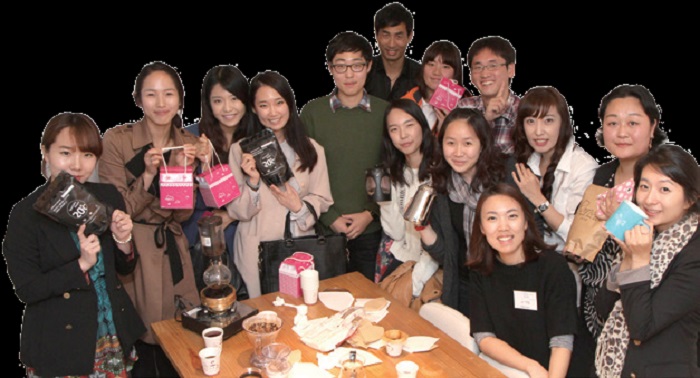The shifting of Korea’s mobile social media
The current population of South Korea is close to 50 million, and smartphone owners make up 74 percent of that. Among Koreans in their 20s, smartphone ownership stands at 98 percent.
What are the most used apps on your smartphone? They are probably social networking services (SNS) apps, such as Facebook, Twitter or Instagram. Up until last year, Koreans tended to use more open types of foreign SNS, such as Facebook and Twitter, which allow users to communicate with friends on an international level, or even with people they’ve never met.
However, these days, trends in user preference have shifted toward more closed types of local SNS, such as Kakao Story or Naver’s Band. These are now used more commonly than the more open types mentioned above. Launched in November 2011, the first of this closed type of SNS was Between by VCNC, a mobile startup.
The app was created for use between only two people, usually couples. This was its main attraction: only two close people could transmit and receive pictures and messages in real time.
The Cautiously Social Network
This closed type of SNS has come into its own, gaining favor by letting users be selective in their interactions, thus avoiding acquaintances or unknown “friends” or “followers” from the web.
According to Nielsen Research, Kakao Story’s market share of Monthly Active Users (MAU) was 41.1 percent in June 2014, which placed it as the leading SNS service in Korea. Naver’s social network, Band, showed the second highest market share with 28.7 percent. Facebook came in with a 22.5 percent share, while Twitter’s showing was at 4.2 percent. In the domestic mobile SNS market, Kakao Story and Band had made their way to the top.
This is a significant change from the end of last year. Band’s market share, which was at 9.9 percent in January 2013, had increased to 23.1 percent by October, surpassing Facebook’s 22.7 percent. Kakao Story has led the mobile SNS service market by steadily occupying over 40 percent since the beginning of 2013. By contrast, Facebook’s market presence stagnated, but has held onto around 22 percent of the market since the end of 2013. Twitter’s share has fallen from last year’s 7 percent to 4.
Accumulatively, Kakao Story and Band acquired around 50 percent of the market by January 2013, continuing to rise to over 70 percent by June 2014.
Behind the growth of these domestic SNS networks was a substantial increase in smartphone users in their 30s, 40s and 50s. According to a survey conducted by Digieco, a Korea Telecom (KT) research group, involving 800 smartphone users, the higher percentage of users in their 30s helped give Kakao Story its top spot. Users in their 40s pushed Band into second place. This migration to more closed networks contrasted with the behavior of younger generations, who predominantly used Facebook. Digieco went on to explain that users in their 40s users liked closed networks because they only wanted to share information, complaints and ideas with close friends and old schoolmates.
 People use more exclusive SNS apps to arrange gatherings and events, such as this group of volunteers from Korean Air. © Yonhap News
People use more exclusive SNS apps to arrange gatherings and events, such as this group of volunteers from Korean Air. © Yonhap News
Texting Housewives and New Horizons
Kakao Story proved to be the most popular network for full-time housewives between the ages of 30 and 50, whom the report labeled as “communication windows.” The results of a Korea Information Society Development Institute (KISDI) survey of 1,233 housewives in their 30s, 40s and 50s showed that 76.8 percent of them used Kakao Story, while Facebook and Twitter garnered a mere 9 percent and 7 percent, respectively.
In the meantime, Band has recently launched services in 10 new languages including English, Japanese and Mandarin. In a sign of the growth of international trade, Band reported that a German language version will be launched later this year.
* Article from Korea Magazine (November 2014)

